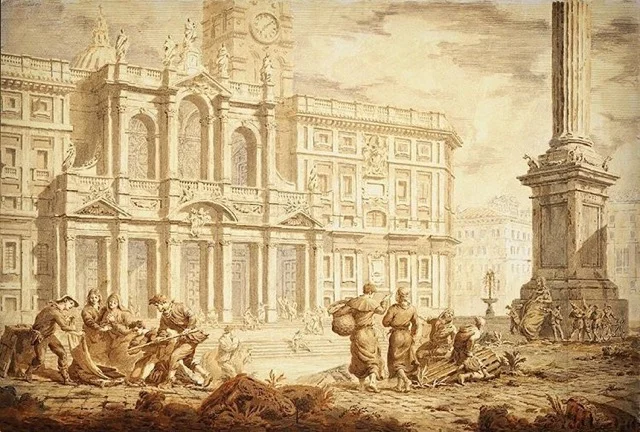THE WALL STREET JOURNAL
Shimmering Black History Brought to Life
A native son of Chicago, Charles White was a radical political progressive with a retrograde artistic talent. A review of ‘Charles White: A Retrospective’ on view at the Art Institute of Chicago through September 3, 2018.
Chicago
Born on this city’s South Side, Charles White (1918-1979) was already a star of the Black Chicago Renaissance, a Midwestern version of the Harlem Renaissance, by his early 20s. At the time, the artist kept a sketchbook that is one of the first objects in his illuminating retrospective—his first major show in over 35 years—now open at the Art Institute of Chicago. That small book can be easy to miss, but it is worth close inspection.
White’s prodigious talents are already manifest in these pages. Here are studies ranging from the dancers of Degas to the statues of the Baule, a people of Ivory Coast. Here are confident drawings in charcoal, pastel, ink, graphite, pen, and watercolor. Here is a portrait of Langston Hughes that includes “his autograph,” as White annotates with an arrow. And finally here are White’s own “theories on teaching art,” where he writes: “Learn to draw the figure, to compose and express ideas clearly, dramatically. Style will come by itself as a matter of course.”
White emerged at a moment of foment in 1930s black Chicago. His challenge was finding the style that best represented the struggles of African-Americans and the working class, and pursuing it in an era increasingly estranged from the craft of illustration. With a lifelong focus on draftsmanship, which also included astonishing achievements in printmaking, White was a radical progressive with a retrograde talent.
Charles White’s ‘Sound of Silence’ (1978) PHOTO: THE CHARLES WHITE ARCHIVES INC./
Curated by Sarah Kelly Oehler of the Art Institute and Esther Adler of the Museum of Modern Art, “Charles White: A Retrospective” highlights the connections among his roots, his ideas and his art. A map in the exhibition includes points of interest that stretched from his South Side home to the main branch of the Chicago Public Library, where his working mother often deposited him as a child. Here, through books such as Alain Locke’s “The New Negro,” White first engaged with the neglected storylines of black America.
This native son attracted early acclaim in Chicago. White went from a Saturday scholarship student at the Art Institute at age 13 to major commissions for murals of black history in his 20s. When the State of Illinois sponsored the “American Negro Exposition” to celebrate the 75th anniversary of the 13th Amendment in 1940, White’s drawing “There Were No Crops This Year,” a swirling graphite illustration of two downcast figures holding an empty sack, received top prize.
Charles White’s ‘Our Land’ (1951) PHOTO: THE CHARLES WHITE ARCHIVES INC.
White created cycles of visual mythology out of black American history. Take, for example, his mural commissioned for Virginia’s Hampton Institute and completed in 1943 showing the “Contribution of the Negro to Democracy in America.” This packed composition inspired by Diego Rivera’s Detroit Industry Murals (and shown here only in reproduction) includes numerous historical figures led by an avenging angel fighting against the anti-democratic forces of bondage. White’s studies for the work depict Denmark Vesey and Paul Robeson as luminous figures in pencil, their faces seeming to reflect light as though rendered in metallic relief. A similar study of Sojourner Truth and Booker T. Washington reveals White’s sensuous all-over line, seen in the wood grain above Washington’s head and in the folds of Truth’s headscarf.
Charles White’s ‘Black Pope (Sandwich Board Man)’ (1973) PHOTO: THE CHARLES WHITE ARCHIVES INC./
White’s talents brought him from the heartland to the coasts. He became immersed in the Harlem Renaissance and then the worlds of black and blacklisted Hollywood. In 1965 he took an influential teaching position at the Otis Art Institute, which he held for the remaining 14 years of his life. By traveling to New York’s Museum of Modern Art in October, and then to the Los Angeles County Museum of Art in February 2019, “Charles White: A Retrospective” will follow the artist’s personal migration.
But White never changed political direction. His worldview spanned the Old Left of the 1930s and the New Left of the 1960s and ’70s. A journey in 1951 to the Soviet Union even included a special trip to the Republic of Georgia to visit the birthplace of Joseph Stalin. The sojourn exposed him to Socialist Realism and upended his own style, which thereafter became more rounded and naturalistic, focused less on historical figures and more on contemporary images of work and toil. A later turn to collage-like compositions, borrowing neo-Dada tropes and Surrealist symbolism, connected his final work to Afrofuturism and the Black Arts Movement.
One might wonder where White’s talents would have taken him had his interests in black experience not become enmeshed in class politics. Nevertheless, just as White gave vision to black history, so is art history rightfully rediscovering White’s vision. “I try to find and search for answers to three questions,” he said in 1971. “Who am I? What am I? Why?” Thanks to this probing exhibition, we can follow his search.
(June 27, 2018)














